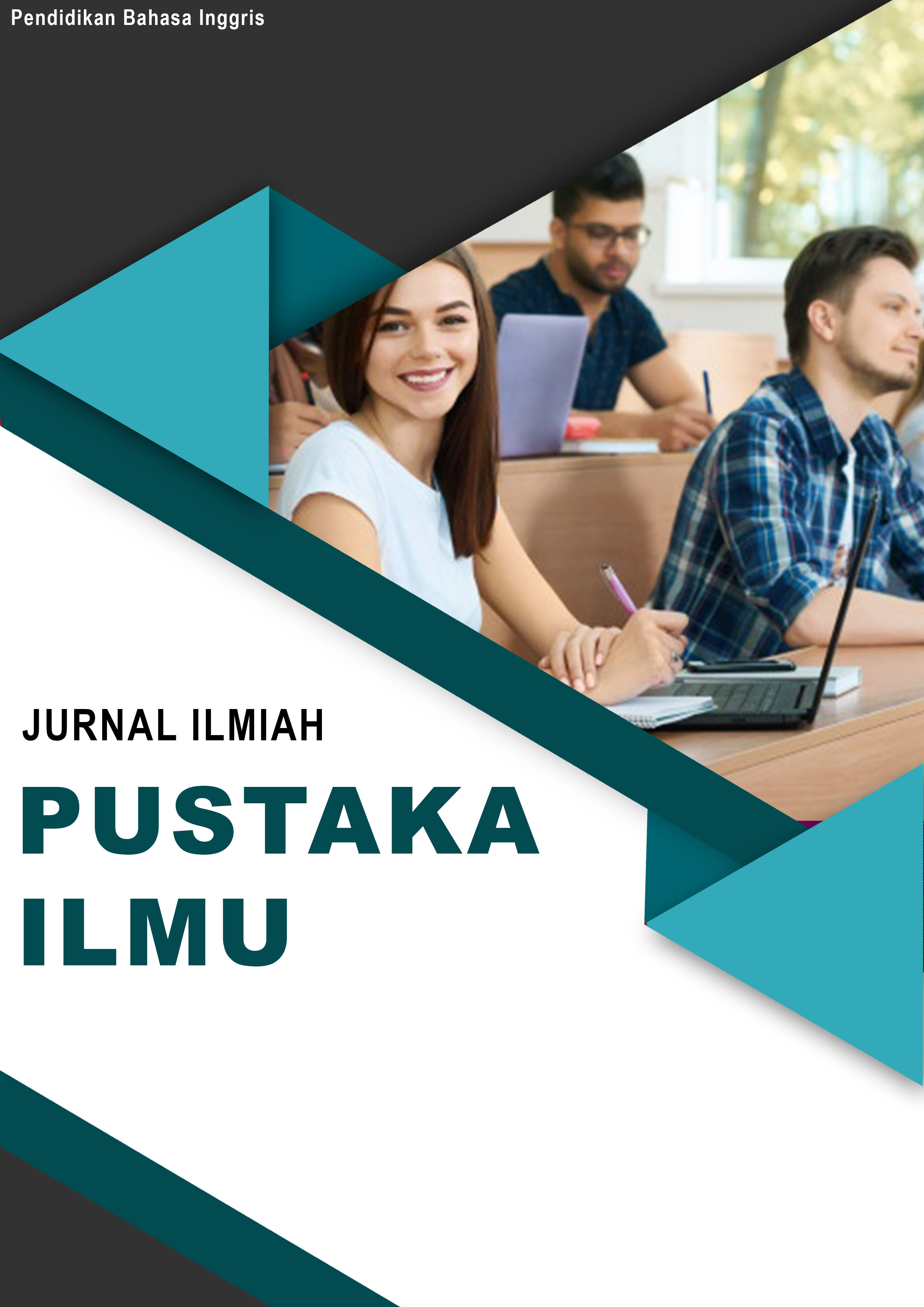THE ANALYSIS OF CONNOTATION MEANING OF L.A. BOLD CIGARETTE ADVERTISEMENT IN MY KIND OF BOLD VERSION
Kata Kunci:
Advertisement, Connotative, Semiotic.Abstrak
This study concerns on the connotative meaning in L.A. Bold cigarette advertisement in Television. The objectives of this study are to find out connotative meaning that can be created from the advertisement and to describe how connotative meaning denoted in the advertisement. Regarding to this, the researchers applied theory of Connotative of a Denotative Sign from Roland Barthes. The data and data source of this study are the text and pictures that appear in the whole advertisement. As the result of this study, the researchers concludes that each sign has a sign system that creates connotation meaning. From the analysis the researchers found 16 connotative meaning that have been analyzed. They are Good Carrier, Enjoyment and Challenge, High class, Masculine and Classic, Playboy and Glamour, Metropolitan, Modern, Masculine, Sporty, Brave, Risk Taker, and not be afraid to smoke cigarette.
Referensi
Afrianto, A., & Inayati, A. (2016). Existential process in Harry Potter and the Chamber of Secret: A systemic functional linguistic study. Teknosastik, 14(1), 26–31.
Al Falaq, J. S., & Puspita, D. (2021). CRITICAL DISCOURSE ANALYSIS: REVEALING MASCULINITY THROUGH L-MEN ADVERTISEMENT. Linguistics and Literature Journal, 2(1), 62–68.
Ambarwati, R., & Mandasari, B. (2020). THE INFLUENCE OF ONLINE CAMBRIDGE DICTIONARY TOWARD STUDENTS’PRONUNCIATION AND VOCABULARY MASTERY. Journal of English Language Teaching and Learning, 1(2), 50–55.
Amelia, D. (2021). UPAYA PENINGKATAN KOSAKATA BAHASA INGGRIS MELALUI STORYTELLING SLIDE AND SOUND. Journal of Social Sciences and Technology for Community Service (JSSTCS), 2(1), 22–26.
Aminatun, D., Ngadiso, N., & Marmanto, S. (2019). Applying PLEASE strategy to teach writing skill on students with different linguistic intelligence. Teknosastik, 16(1), 34–40.
Daun-Barnett, N., & Affolter-Caine, B. (2005). Utilizing Geographic Information Systems (GIS) to Influence State Policy: A new descriptive, diagnostic, and analytical tool for higher education research. Public Policy Conference.
Evayani, W., & Rido, A. (2019). Representation of Social Actors in Sexual Violence Issue in The New York Times and The Jakarta Post Newspapers: A Critical Discourse Analysis. Teknosastik, 17(2), 43–55.
Febriantini, W. A., Fitriati, R., & Oktaviani, L. (2021). AN ANALYSIS OF VERBAL AND NON-VERBAL COMMUNICATION IN AUTISTIC CHILDREN. Journal of Research on Language Education, 2(1), 53–56.
Gulö, I. (2014). The Influence of Nias Language to Bahasa Indonesia. Konferensi Linguistik Tahunan Atma Jaya.
Gulö, I. (2018). How Nias Sees English Personal Pronouns Used as Preposition Objects. LINGUA: Jurnal Bahasa Dan Sastra, 18(2), 147–156.
Kaid, L. L. (2004). Political advertising. Lawrence Erlbaum Associates Publishers.
Kardiansyah, M. Y. (2016). The index of hero’s power and nobility in Shakespearean tragedy drama: A semiotic study. Teknosastik, 14(2), 11–17.
Kardiansyah, M. Y. (2017). Tubuh dan Relasi Gender: Wacana Pascakolonial Dalam Novel “The Scarlet Letter” Karya Nathaniel Hawthorne. Poetika: Jurnal Ilmu Sastra, 5(1), 58–67.
KUSWOYO, H., SUJATNA, E. V. A. T. S., & CITRARESMANA, E. (2013). Theme of imperative clause in political advertising slogan. Research Journal of English Language and Literature, 1(4), 162–168.
Lubis, M., Khairiansyah, A., Adrian, Q. J., & Almaarif, A. (2019). Exploring the user engagement factors in computer mediated communication. Journal of Physics: Conference Series, 1235(1), 12040.
Meliasari, R., Ngadiso, N., & Marmanto, S. (2018). The Picture Word Inductive Model: Its Effectiveness to Teach Writing Viewed from Students’ Interest. International Journal of Language Teaching and Education, 2(3), 248–258.
Novita, D., & Husna, N. (2020). THE INFLUENCE FACTORS OF CONSUMER BEHAVIORAL INTENTION TOWARDS ONLINE FOOD DELIVERY SERVICES. TECHNOBIZ: International Journal of Business, 3(2), 40–42.
Pranoto, B. E., & Afrilita, L. K. (2019). The organization of words in mental lexicon: evidence from word association test. Teknosastik, 16(1), 26–33.
Pranoto, B. E., & Suprayogi, S. (2020). Incorporating 9GAG memes to develop EFL learners’ speaking ability and willingness to communicate. IJEE (Indonesian Journal of English Education), 7(2), 130–144.
Pratiwi, Z. F., & Ayu, M. (2020). THE USE OF DESCRIBING PICTURE STRATEGY TO IMPROVE SECONDARY STUDENTS’SPEAKING SKILL. Journal of English Language Teaching and Learning, 1(2), 38–43.
Puspita, D., & Pranoto, B. E. (2021). The attitude of Japanese newspapers in narrating disaster events: Appraisal in critical discourse study. Studies in English Language and Education, 8(2), 796–817.
Pustika, R. (2018). Considering Students’ Reading Interest in Text-Selection to Foster Literacy in the English Classroom. ADJES (Ahmad Dahlan Journal of English Studies), 5(2), 69–77.
Rido, A. (2017).  WHAT DO YOU SEE HERE FROM THIS PICTURE?: QUESTIONING STRATEGIES OF MASTER TEACHERS IN INDONESIAN VOCATIONAL ENGLISH CLASSROOMS. TEFLIN Journal, 28(2), 193–211.
Ruyani, A., & Matthews, C. E. (2017). A Study on the Influences of Exclusive Stopping Space on Saturation Flow (Case Study: Bandar Lampung). In Preparing Informal Science Educators (pp. 387–417). Springer.
Saifuddin Dahlan, F. H. (2013). THE INFLUENCES OF PERSONALITY AND COGNITIVE PERCEPTION TOWARDS THE STUDENTS’INTENTION TO USE DATABASE SOFTWARE AT THE COMPUTERIZED ACCOUNTING VOCATIONAL COLLEGES IN LAMPUNG PROVINCE. Universitas Lampung.
Sari, F. M. (2016). Internet-based materials in enhancing college students’ writing skill viewed from their creativity. Teknosastik, 14(1), 41–45.
Schrape, J.-F. (2018). Social Media, Mass Media and the “Public Sphere”. Differentiation, Complementarity and Co-Existence. SSRN Electronic Journal. https://doi.org/10.2139/ssrn.2858891
Tiono, N. I., & Sylvia, A. (2004). The types of communication strategies used by speaking class students with different communication apprehension levels in English Department of Petra Christian University, Surabaya. K@ Ta, 6(1), 30–46.
Wahyudin, A. Y. (2017). The Effect of Project-Based Learning on L2 Spoken Performance of Undergraduate Students in English for Business Class. Paper presented on The Ninth International Conference on Applied Linguistics (Conaplin 9), 42-46.
Zuhud, D. A. (2014). Mental and relational process of transitivity in Donne’s and Blake’s poems: A Systemic Functional Linguistics approach. International Journal of English and Education, 3.


